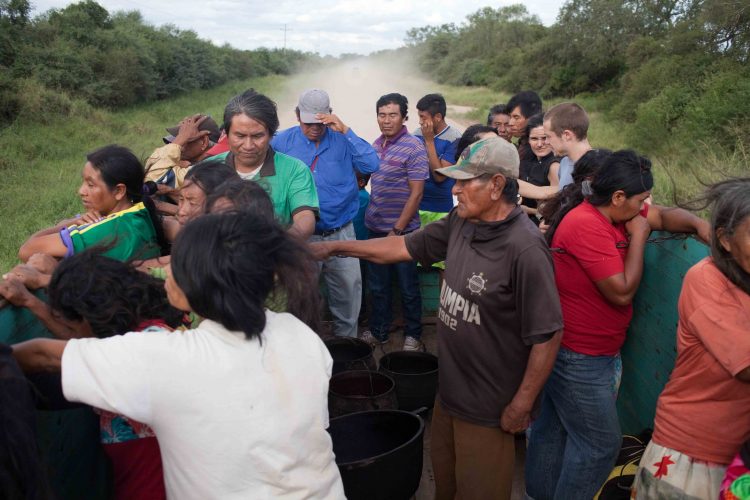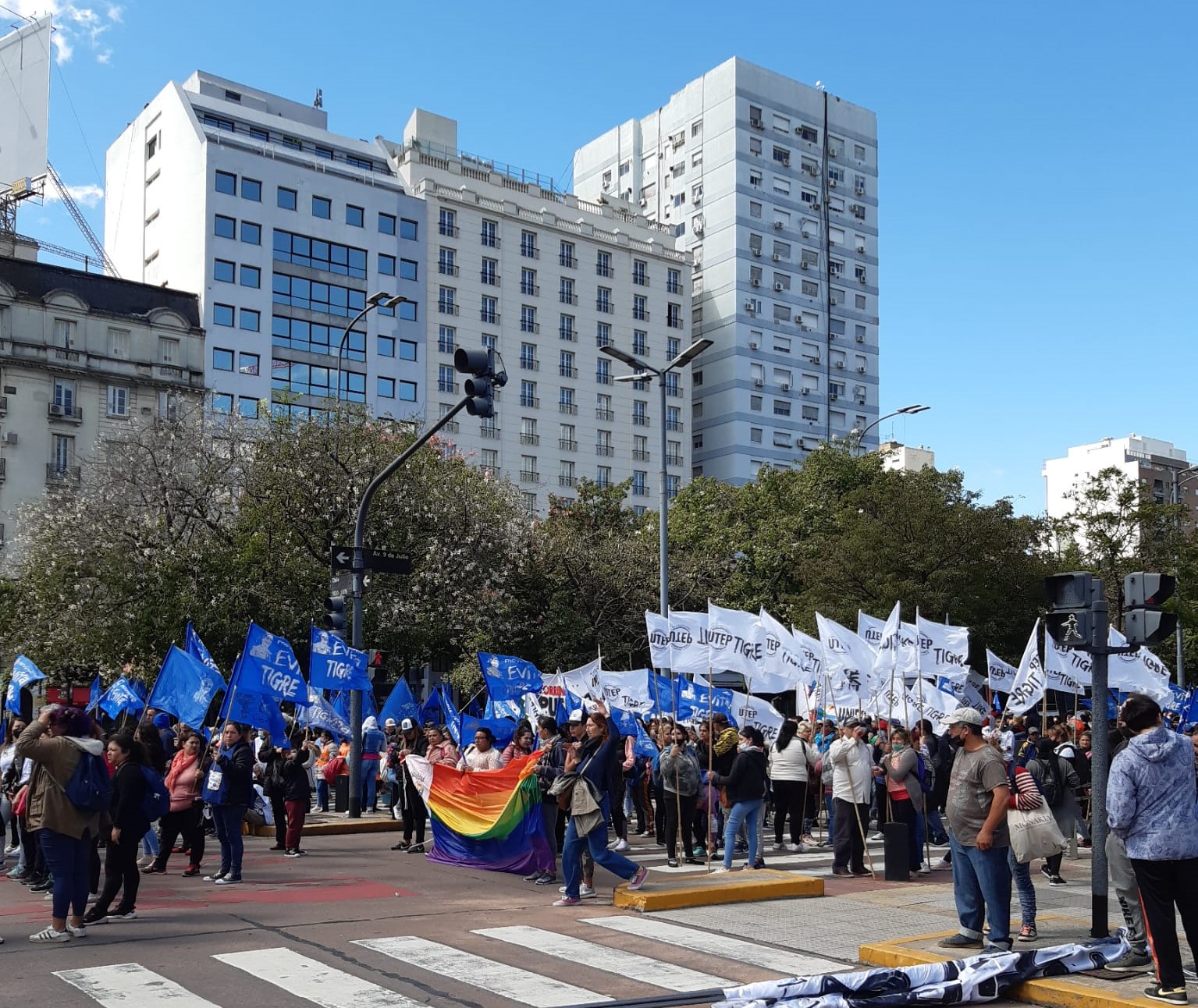By Massimo Meccheri, local technician for Central America in the area of Social Policies at IILA, part of the EUROsociAL+ European Union Programme

The question regarding migration, which only a few months ago was at the centre of the political agenda in most countries seems to have disappeared from public debate during the current health emergency. However, the problems associated with it remain pertinent – perhaps even more so as a consequence of the health (and economic) emergency that, directly or indirectly, has had and will have a major impact on migration.
SICA countries, which before the pandemic were about to approve the Comprehensive Action Plan for Addressing Migration in the SICA region (PAIM-SICA) [1]are also today faced with the need to think about a recovery, social reconstruction and resilience plan[2]. They are fully aware that the issue of migration is far from having been resolved, only that new challenges have been added to it. Three aspects of the migration issue with regard to Covid-19 in Central America (the predicted drop in remittances, returning migrants and possible new migration flows caused by the economic crisis resulting from the pandemic) will be analysed below, with suggestions for discussion and proposals for action.
In April, the World Bank calculated that due to the effects of the pandemic, remittances to the Latin American region would decrease this year by 19.3% [3]. However, in recent months a change in trend has been noted: despite a decrease in money transfers to their families at the beginning of the coronavirus crisis, Central American emigrants managed to reverse the trend and increase the injection of cash in May and June to their countries, where quarantines have been especially strict and have increased the poverty from which many fled [4]. How can this apparent trend be explained? According to Jorge Peraza Breedy, IOM Chief of Mission for El Salvador, Honduras and Guatemala, through the resilience of the migrant population, their occupation of posts considered essential (food chain, health, care) and above all through their concern for the health and well-being of family members in their countries of origin[5].
In a number of Central American countries, the contribution made by remittances to economic activity is very significant. In 2019, remittances from El Salvador and Honduras contributed around 20% of GDP, while from Guatemala and Nicaragua the contribution was over 10% and around 8% from the Dominican Republic[6]. Between 80% and 90% of remittances are used to cover basic household needs (food, health and housing), meaning that a contraction would have a significant impact on consumption and poverty. What can be done to counteract their predicted decline or to maintain them at current levels, while avoiding serious effects on the economies of several countries in the region? The World Bank suggests that a reduction in the costs of sending remittances would have a positive effect. We should add that this would be an effective and fair measure, but not enough. The Central American economy is projected to contract 3.6% this year[7], due to restrictions on movement, loss of remittances, less tourism and falling agricultural prices[8]. In order to tackle the reduction in remittances or to maintain them at current levels and to prevent the consequences of this crisis becoming catastrophic with regard to Central American economies (that is to say, with a general increase in poverty and unemployment with a larger informal economy and greater new migrant flows), the region’s governments should consider which have the greatest migratory pressure with a view to negotiating with the main destination country governments, asking them to broaden the eligibility criteria in their social protection programmes, implement the measures created to deal with the health emergency without taking into account the migratory situation and, above all, implement mechanisms to regularise the undocumented migrant population. This was the case after Hurricane Mitch in 1998, when Central American governments, badly affected by the passage of the hurricane, negotiated a Temporary Protection Treaty with the United States which gave tens of thousands of Central Americans access to a residence permit[9].
The regularisation of irregular migrants, at a time of serious crisis in their countries of origin, allowed them to contribute with their work to the recovery of the region and the upkeep of their families. The objection could be made that the main destination countries of Central American migration are also currently facing an unprecedented economic crisis and high unemployment rates. Nevertheless, the current emergency has shown once again that there are entire sectors of the economy that depend on migrant labour. This is the case of those countries that, in the midst of the emergency, have had to take extraordinary measures with regard to the need for agricultural labour for example, passing emergency decrees to regularise migrants [10]. In other cases, the crisis has considerably increased the demand on health services, and there are already developed countries announcing campaigns to recruit doctors and nurses in third countries. There is a worldwide need to train more health professionals and facilitate the recognition of their skills in destination countries. [11] The extension of Temporary Protection Treaties and, in general, the regularisation of undocumented migrants can contribute to sectors that need labour in destination countries and help alleviate the economic crisis in countries of origin.
Flights of deportees from the US to Central America have not stopped, even with the closure of borders and have created the need to install care centres in the countries in the region in which returned migrants can spend time in quarantine [12]. According to data from the IOM Human Mobility Information Management Initiative in the Northern Triangle (NTMI), for 2019, 251,778 people returned, mostly from Mexico (52.8%) and the United States (45.7%). Between January and April 2020, the number of people returning to the Northern Triangle of Central America was 49,533 people [13]. This number is set to increase – in the short term due to border closures and the tightening of controls, and in the medium-long term due to economic crises and unemployment in the main destination countries for labour migration. Before the health emergency and with the support of cooperating countries, huge resources were invested in labour inclusion programmes for migrants returning to Northern Triangle countries. It is highly likely that these will be maintained and possibly increased. However, while these programmes are very important and a help in capitalising on the skills of migrants who return after long periods abroad, they cannot be the only answer. This is even more the case when we take into account that, as evidenced in a study carried out by the Observatory of International Migration at the Autonomous University of Honduras [14], 75% of returning migrants expressed the intention of emigrating again and 25% have actually done so. Why are we not looking for other options to increase decent employment opportunities? This includes exploring those opportunities offered by the regional labour market, for example.
A recent study [15] shows that in the SICA Region, measures should be taken towards a greater regularisation of migratory dynamics, favouring the productive transformation of the countries of origin towards the creation of better jobs, facilitating access to capital, technologies and knowledge. However, in member countries there is still no regional labour migration policy that defines the position of the countries concerned regarding labour migration […] Good governance of labour migration at the regional level would facilitate the economic development of origin and destination countries, in addition to the formation of human capital, given that most migrants bring with them skills and knowledge acquired in the country of destination which can be used in the country of origin upon their return. In the recent past, Labour Ministers from Central America and the Dominican Republic raised the need for a Regional Agreement on Labour Migration, something that would be a very significant step forward and a strategic action in the recovery phase in order to energise the Central American economy and labour market.
In the short term, migrant flows to developed countries are likely to decrease, the main destination countries for Latin American migrants are the USA, Spain and Italy, which are also among the countries hardest hit by Covid-19. However, migrants – especially the undocumented – in destination countries will be maintained, pending an economic recovery that allows them to return to work or because of the impossibility of returning to their country of origin due to border closures. In the United States, the main destination country for migrants from Central America, the health crisis affects sectors where migrants are traditionally employed, such as construction, restaurants and hotels. In 2018, 28.7% of migrants from countries of the region were employed in services and 20.6% in construction and maintenance (United States Census Bureau, 2018) [16]. However, for multiple reasons, the economic crisis and unemployment will not necessarily reduce the flow of migrants in search of job opportunities. Among the causes of migration from Central America, poverty, lack of decent employment, family reunification, violence and insecurity have traditionally been identified. However, for ECLAC, among the structural causes of migration is population growth, which in recent years has led to an increase in the working-age population [17].
In 2018, Central America and the Dominican Republic had approximately 55 million inhabitants, almost 15 million (30%) more than in 2000. One in three Central Americans reside in Guatemala, where the population increased by 39% over that period. Just over half of the inhabitants of Central America live either here or in Honduras. According to projections, the population of Central America will continue to grow until reaching its maximum in the 2050s, when it will reach a total of about 75 million people, from which point it will tend to drop off. The increase in the relative weight of productive age groups (15 to 64 years) went from 55.9% in 2000 to 62.7% in 2015 and will reach 67.5% in 2030. In the next two decades, Central America and the Dominican Republic will have the largest population of productive age in their history [18]. If we add this information to the ILO projections for unemployment in Central America caused by the health crisis, it is easy to foresee that migrant flows to the United States and Europe will continue and perhaps increase. Faced with this forecast, a regional recovery plan would have to carefully consider mechanisms for regular labour migration, proposing worker migration agreements and conventions with destination countries, linking labour demand and supply, supporting training at origin, based on the required skills at destination and facilitating the certification of migrant worker qualifications and skills. It is something that can be done and is already being done.
Aware that border control cannot be the only answer to migratory phenomena, the European Union is promoting, facilitating and supporting new mechanisms for regular labour migration [19]. The Global Skills Partnership is one such initiative. It is a bilateral agreement between peers – the destination country provides the technology and financing for the professional training of potential migrants in the countries of origin, before their migration and based on the specific skills required in their labour market, ensuring that it is prepared to receive contingents of migrants with the skills it needs. The country of origin is committed to the training of both potential migrants and non-migrants, thus also contributing to training and ensuring its own specialised human capital has new skills [20].
To conclude, these are three separate yet complementary facets of migratory phenomena. Three specific proposals based on experiences and good practices and, ultimately, three effective ways to contribute to the Recovery, Social Reconstruction and Resilience Plan of Central America and the Dominican Republic through the orderly, safe and regular management of migration.
The European Union EUROsociAL+ Programme is contributing to the debate, the exchange of experiences and the construction of public policies on migratory phenomena in and from Latin America in a number of contexts: with the Secretariat for Central American Social Integration (SISCA), the International Labor Organization (ILO), and the SICA region Ministries of Labour, promoting greater coherence between migration policies and labour market policies so that the regulation and management of the access, departure, stay and return of migrants are increasingly approached through inter-institutional governance mechanisms. Of particular importance here is ensuring coordination with labour market institutions and with Pacific Alliance countries (Mexico, Colombia, Chile and Peru) so that the recognition of labour skills allows and facilitates labour mobility in the region. These efforts and commitments originate from a factor which has lead to conclusions being drawn and a proposal made: almost 70% of international migrants are migrant workers; labour migration policies must therefore be constructed to help reinforce legal channels for migration and discourage clandestine movement.
[1] PAIM-SICA, SICA-IOM-UNHCR, 2019
[2] Second special declaration of the Council for Central American Social Integration (CIS): United for the recovery and social reconstruction of the SICA Region, 27 April 2020
[3] https://www.bancomundial.org/es/news/press-release/2020/04/22/world-bank-predicts-sharpest-decline-of-remittances-in-recent-history
[4] https://elpais.com/mexico/2020-07-25/las-remesas-salen-al-rescate-de-las-familias-golpeadas-por-el-coronavirus.html
[5] https://eurosocial.eu/seminarios-web/migracion-y-empleo-en-epoca-de-covid-19-las-personas-migrantes-y-retornadas-en-el-contexto-del-plan-de-recuperacion-reconstruccion-social-y-resiliencia-de-la-region-sica/
[6] https://cpalsocial.org/documentos/932.pdf
[7] http://pubdocs.worldbank.org/en/657071588788309322/Global-Economic-Prospects-June-2020-Regional-Overview-LAC-SP.pdf
[8]Another scenario sees a greater worsening in the forecasts for economic growth in 2020 in Central America and the Dominican Republic, an estimated GDP decrease of -6.8%. http://websieca.s3.amazonaws.com/comunicacion/informes%20de%20gestion/ImpactoCovid-19_VF.pdf
[9] 200,000 Salvadorans, 5,000 Nicaraguans and 56,000 Hondurans benefit from this initiative.
[10] http://www.agrifoodtoday.it/lavoro/bellanova-regolarizzazione-migranti.html
[11] https://www.knomad.org/publication/migration-and-development-brief-32-covid-19-crisis-through-migration-lens
[12] https://elfaro.net/es/202003/centroamerica/24177/La-cuarentena-del-Tri%C3%A1ngulo-Norte-no-logra-detener-los-vuelos-de-deportados.htm
[13] https://mic.iom.int/webntmi/
[14] Survey on youth, employment and migration in the Departments of Choluteca and Valle, OMIH, FLACSO-UNAH, Honduras 2018
[15] ]Findings of the baseline study on migration and displacement in the SICA region, SICA-IOM-UNHCR, July 2019
[16] https://cpalsocial.org/documentos/932.pdf
[17] Towards a new style of development. El Salvador-Guatemala-Honduras-Mexico comprehensive development plan. ECLAC Diagnosis, Areas of Opportunity and Recommendations, 2019
[18] CELADE, ECLAC, ILO, State of the Region data
[19] European Commission, “Communication from the Commission to the European Parliament, the European Council and the Council: Managing migration in all its aspects: progress under the European Agenda on Migration”, Brussels, 4 December 2018.
[20] ISPI, The future of migration to Europe, 2020



